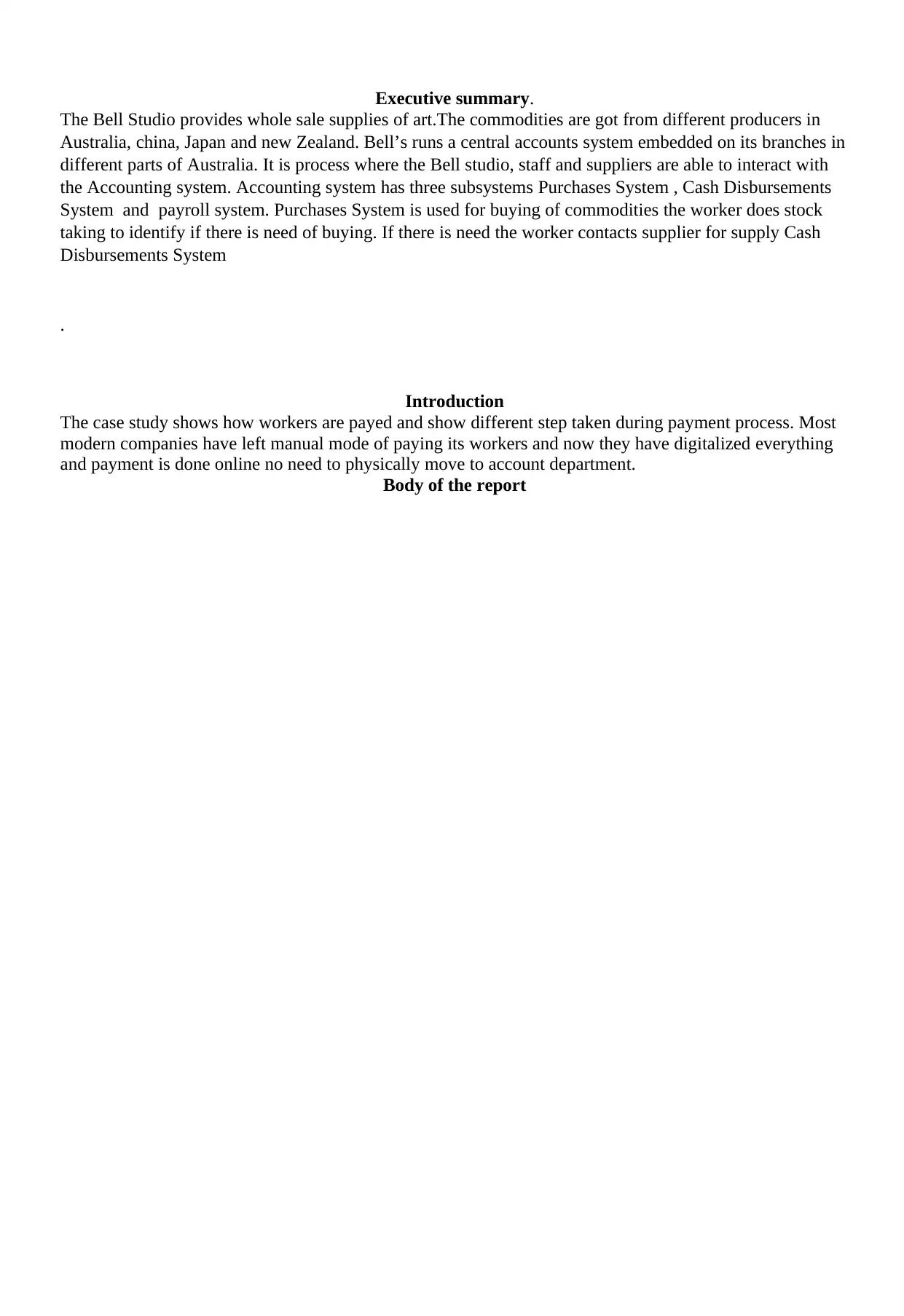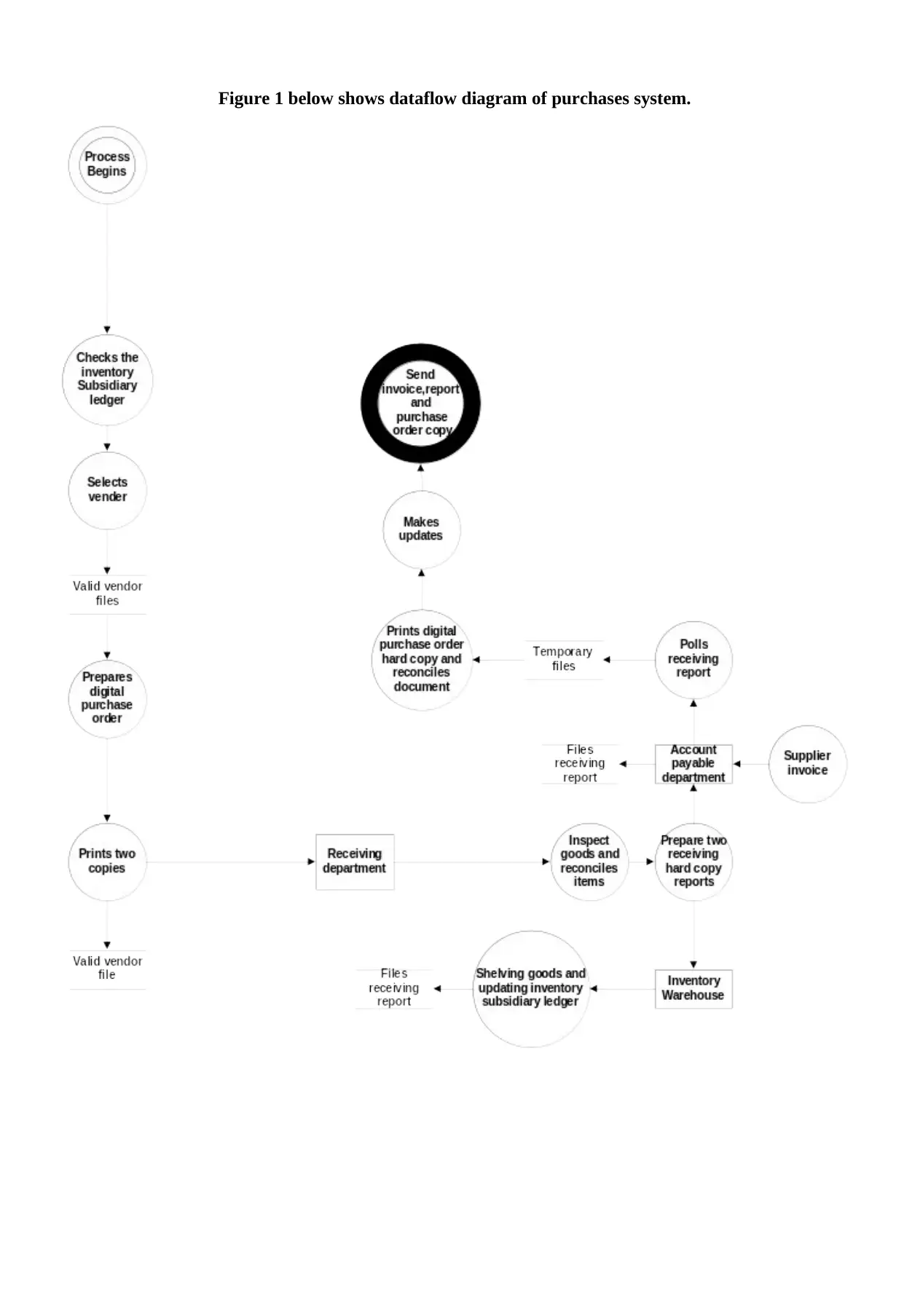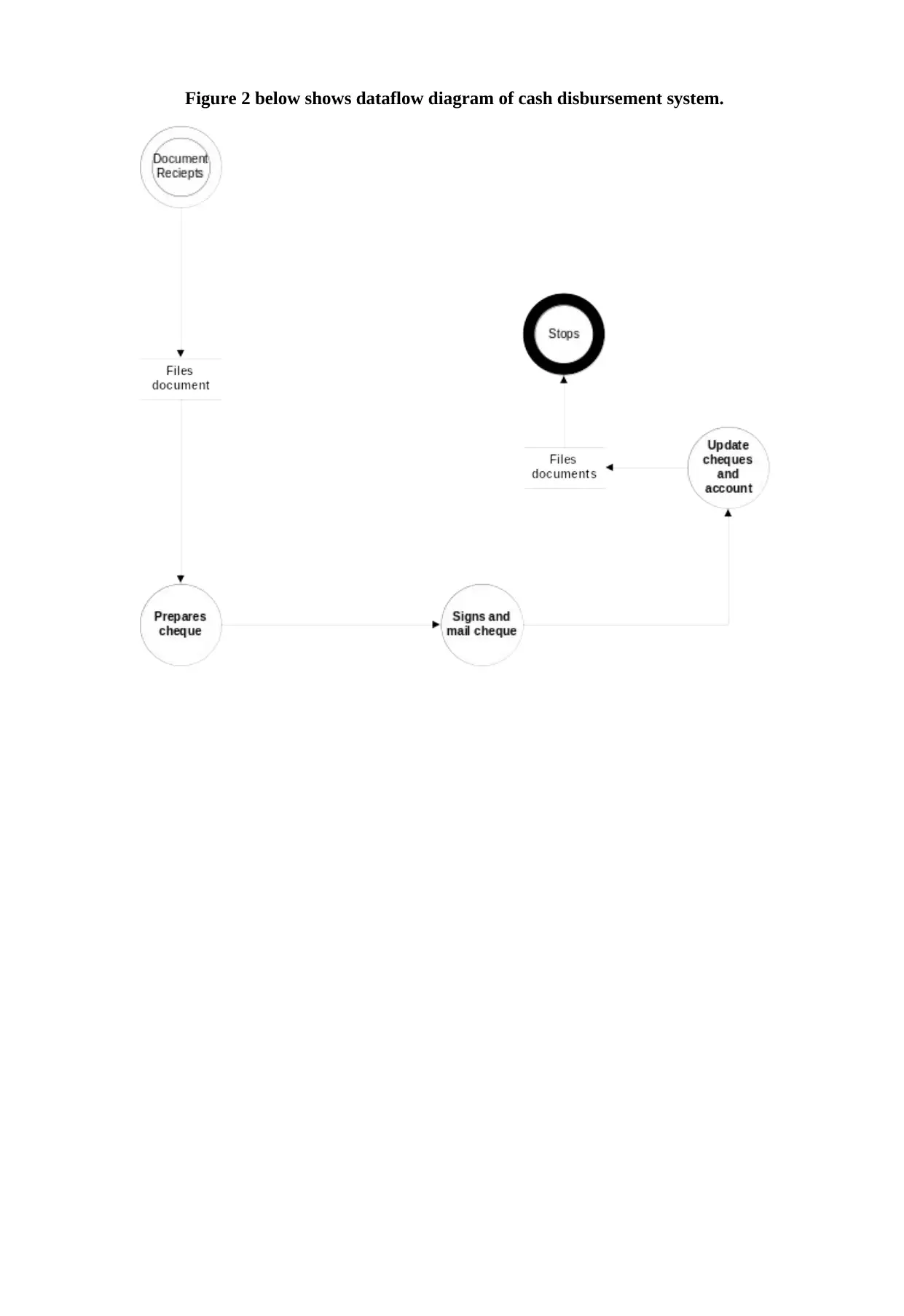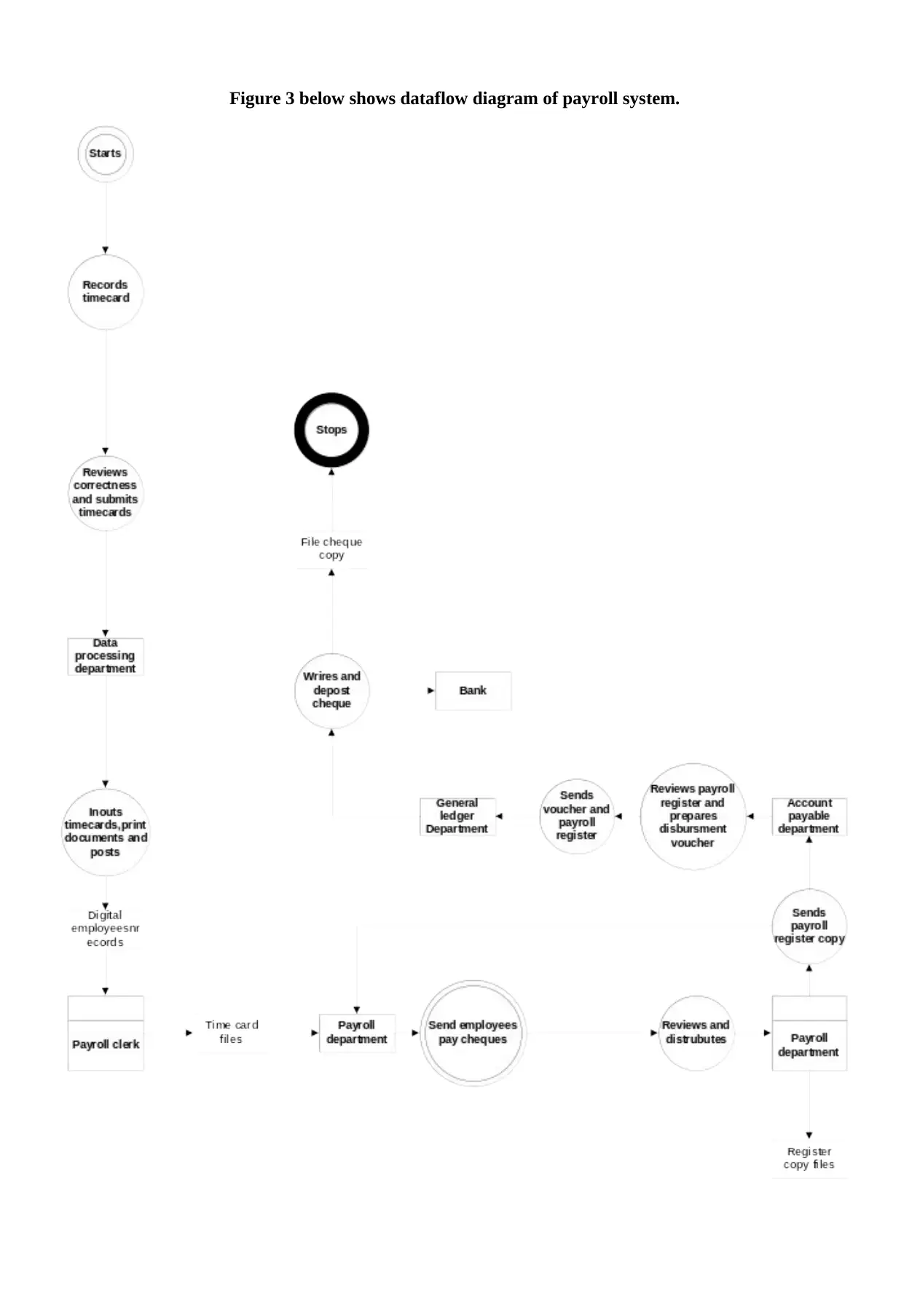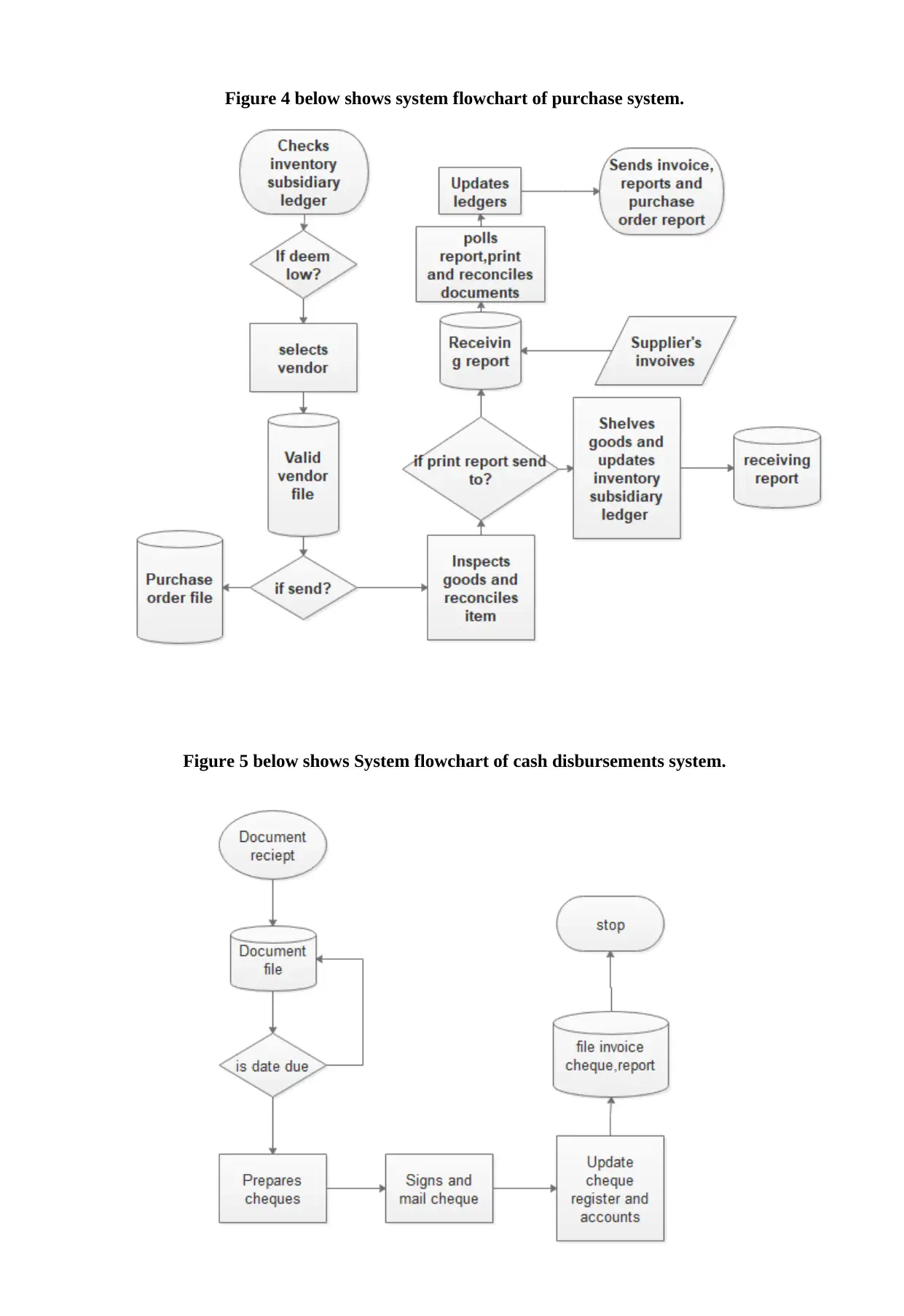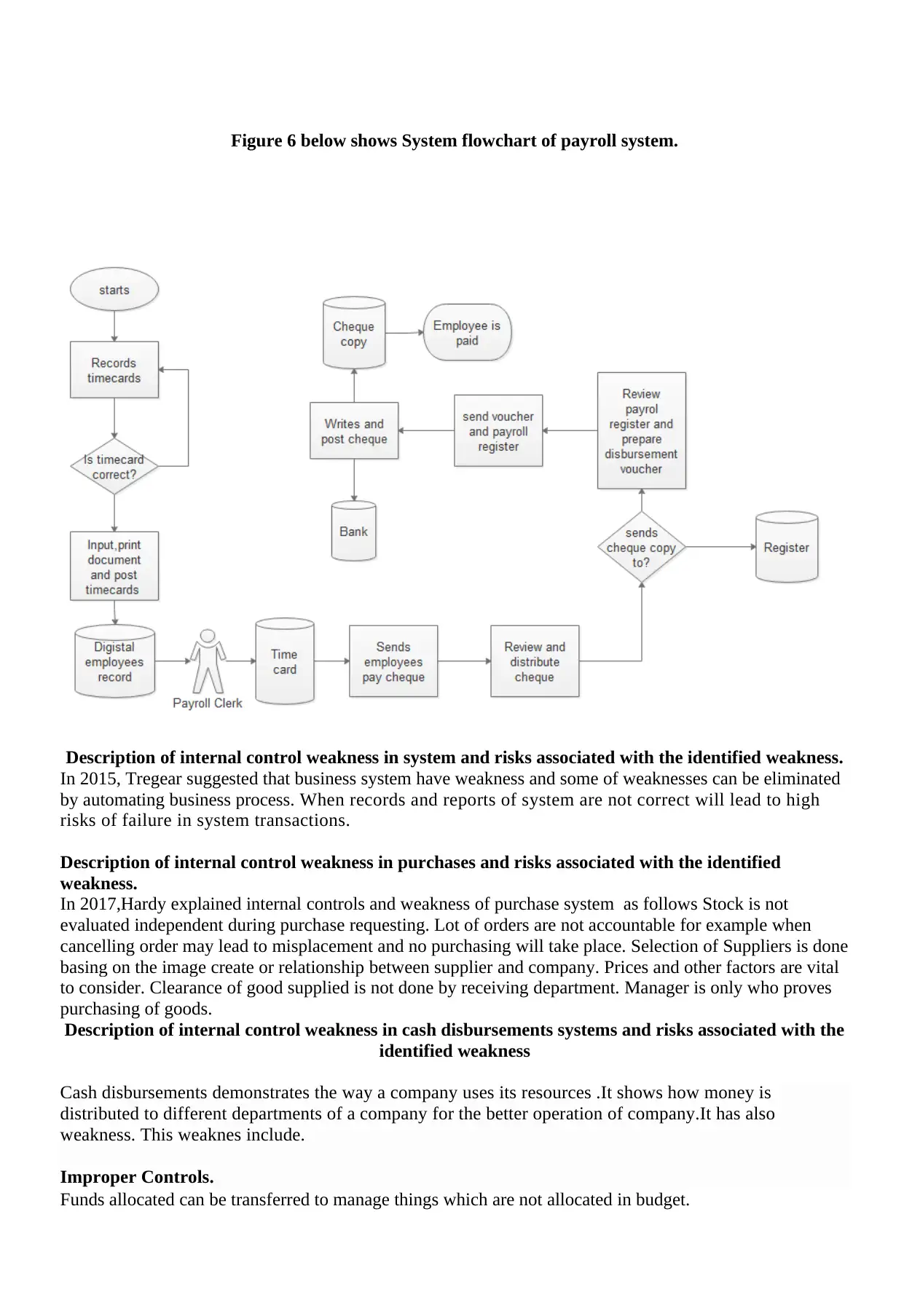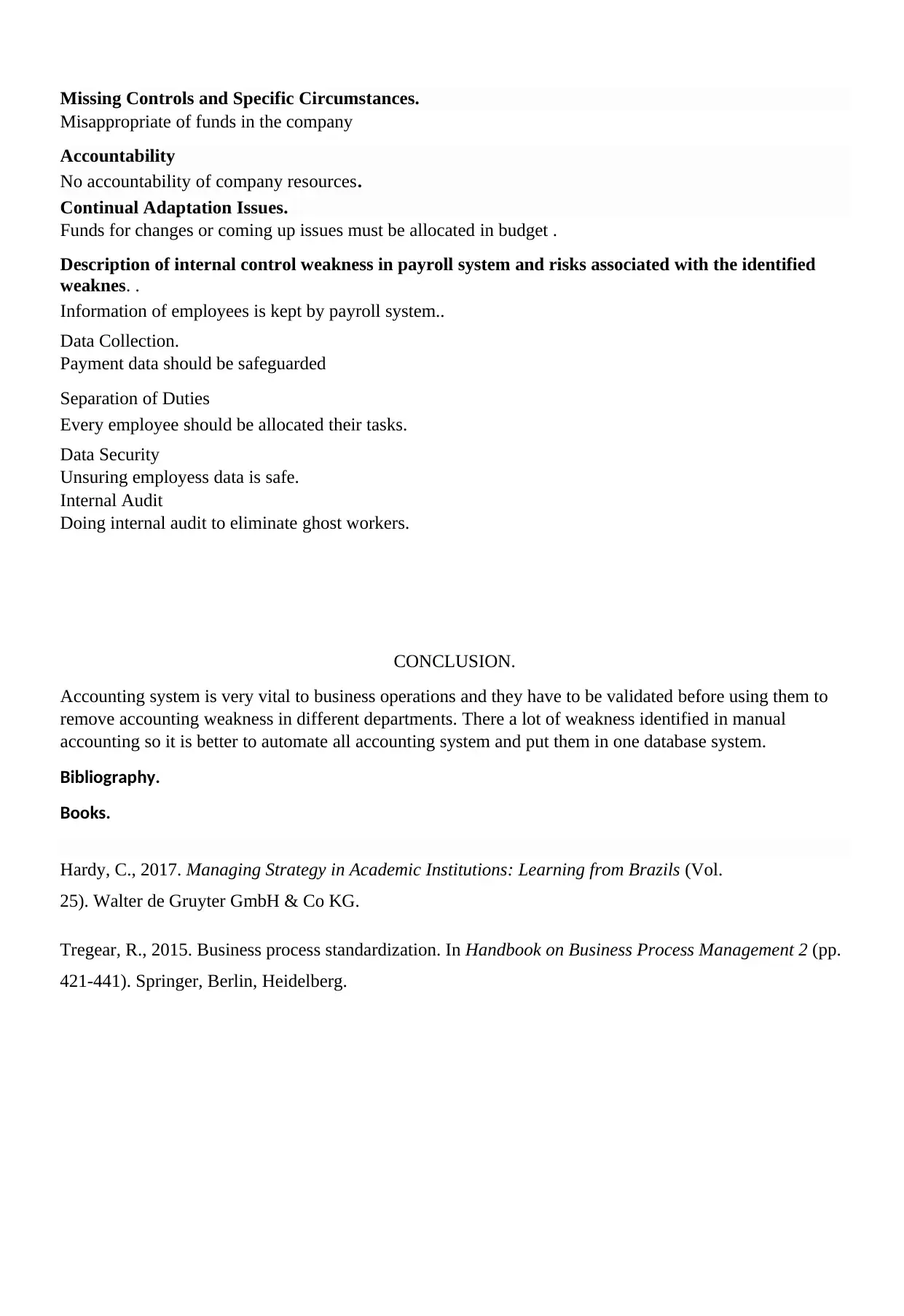Internal Control Weaknesses in Accounting Systems
VerifiedAdded on 2022/12/30
|7
|678
|54
AI Summary
This case study discusses the internal control weaknesses in the accounting systems of The Bell Studio, including the purchases system, cash disbursements system, and payroll system. It also highlights the risks associated with these weaknesses and suggests the automation of accounting systems to eliminate them.
Contribute Materials
Your contribution can guide someone’s learning journey. Share your
documents today.
1 out of 7
![[object Object]](/_next/static/media/star-bottom.7253800d.svg)
